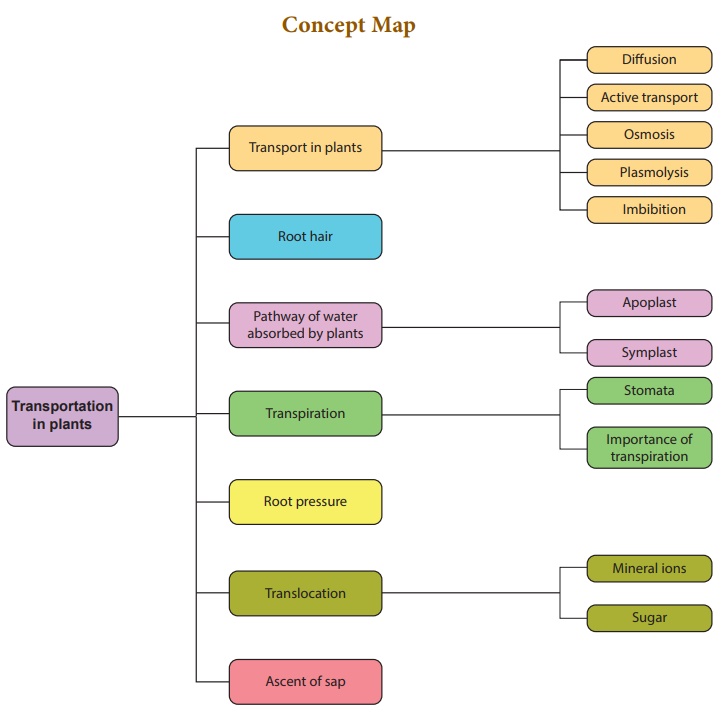Transportation in Plants and Circulation in Animals - Points to Remember | 10th Science : Chapter 14 : Transportation in Plants and Circulation in Animals
Chapter: 10th Science : Chapter 14 : Transportation in Plants and Circulation in Animals
Points to Remember
Transportation in Plants and Circulation in Animals
Points to Remember
· The movement of molecules from a region of higher concentration to a region of their lower concentration without the utilization of energy is called diffusion.
· Osmosis is the movement of solvent or water molecules from the region of higher concentration to the region of lower concentration through a semi-permeable membrane.
· Transpiration is the evaporation of water in plants through stomata in the leaves.
· The circulatory system consists of the circulating fluids, the blood and lymph and the heart and its blood vessels.
· The blood consists of two main components. The fluid plasma and the formed elements (blood cells) which are found suspended in the plasma.
· A muscular pumping organ that pumps out the blood into the blood vessels is called heart.
· The blood circulates in our body as oxygenated and deoxygenated blood.
· The supply of blood to the heart muscles (cardiac muscles) is called as coronary circulation.
· One complete contraction (systole) and relaxation (diastole) of atrium and ventricles of heart is called a heartbeat.
· The sequence of events which occur during the beginning and completion of one heart beat is called cardiac cycle.
· Blood pressure is usually expressed as systolic pressure and diastolic pressure (120mm / 80 mm Hg)
· An individual has one of the four blood groups A, B, AB and O.
· Rh factor was discovered by Landsteiner and Wiener in 1940.
· Lymph is a colourless fluid formed when plasma, proteins and blood cells escape into intercellular spaces in the tissues through the pores present in the walls of capillaries.


Related Topics